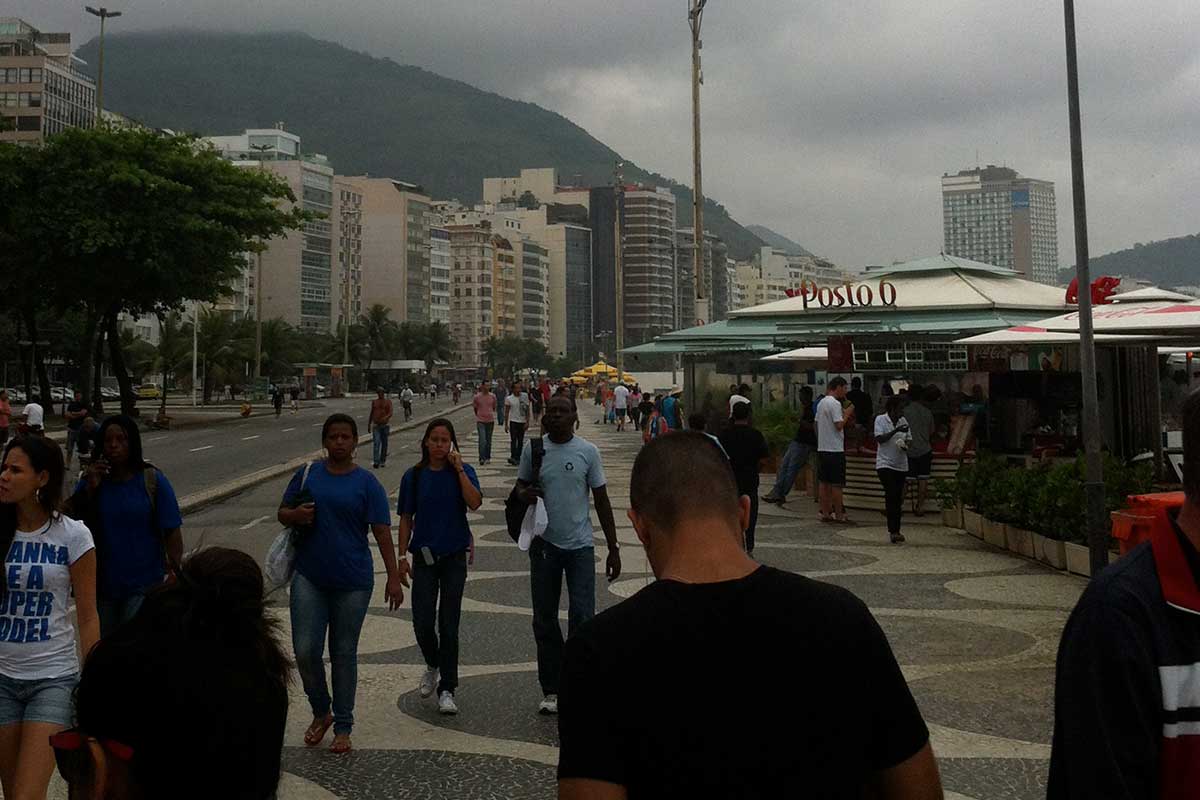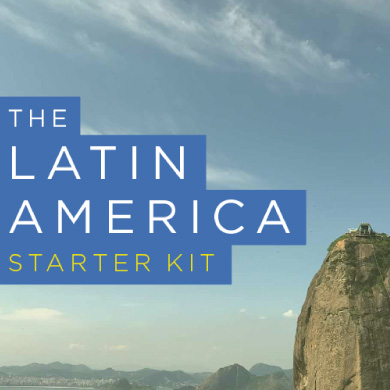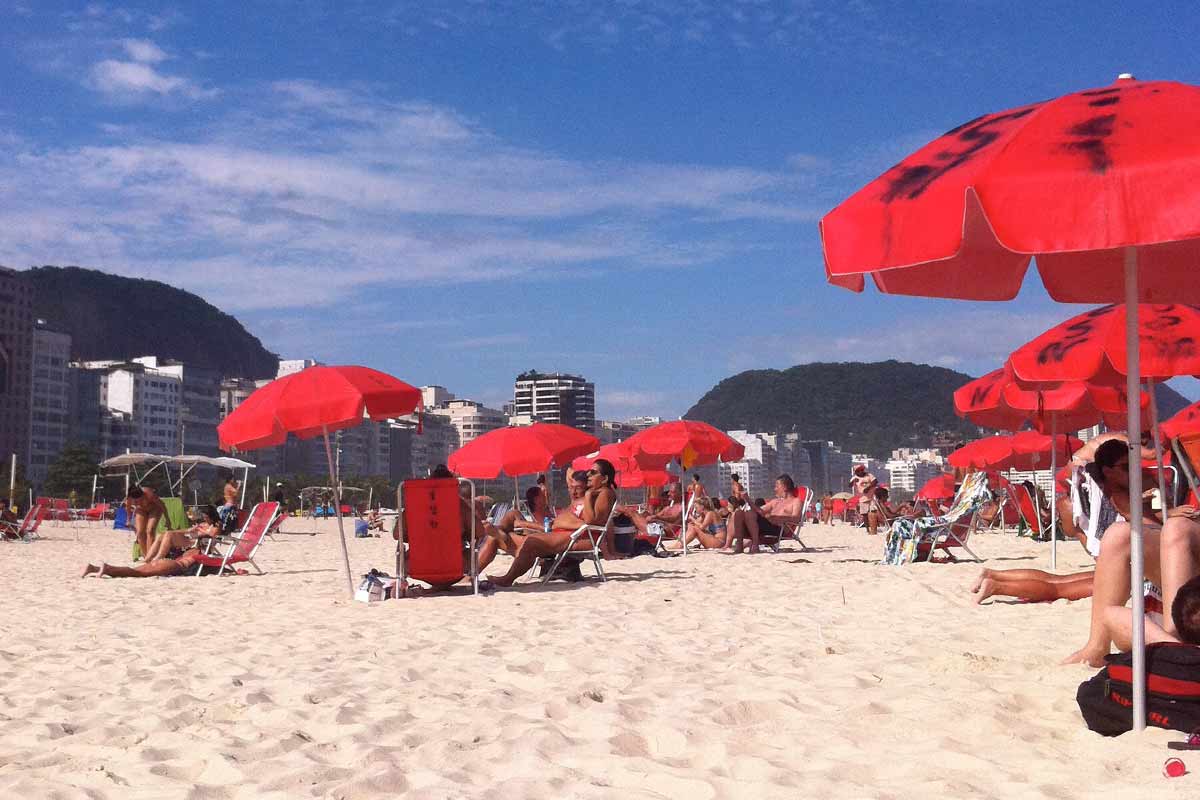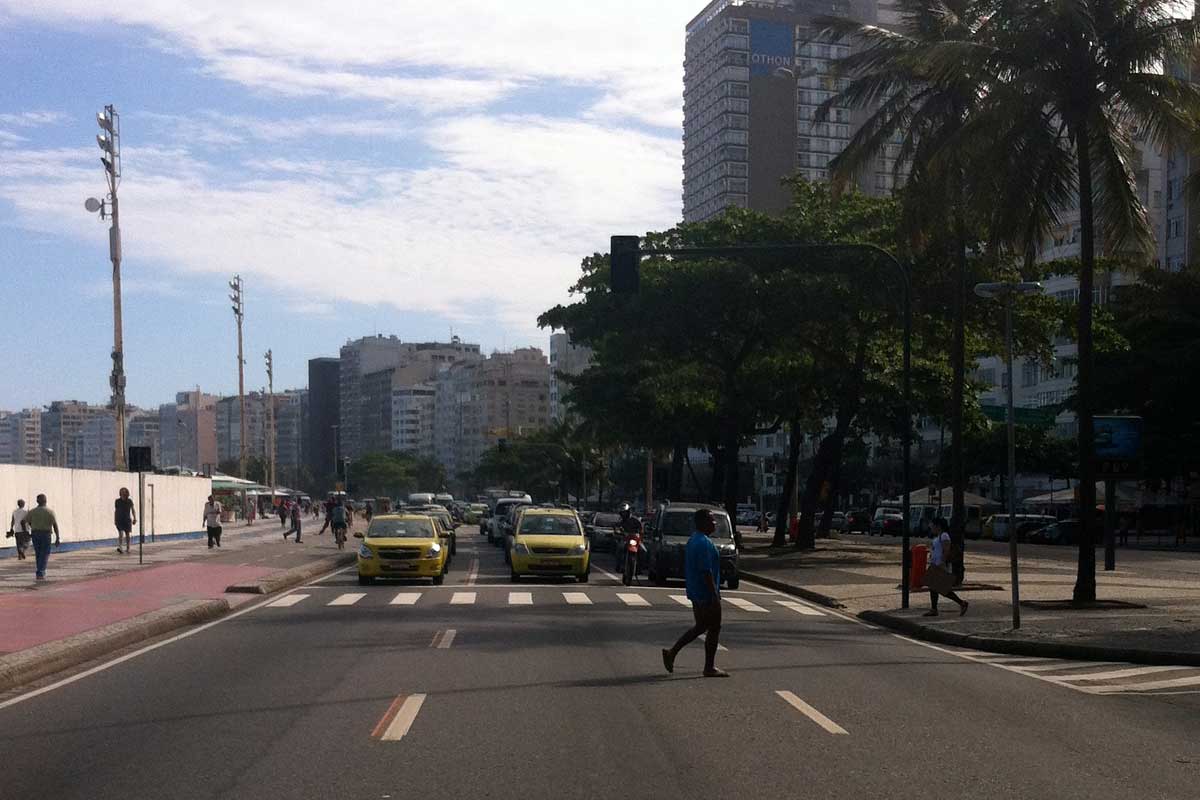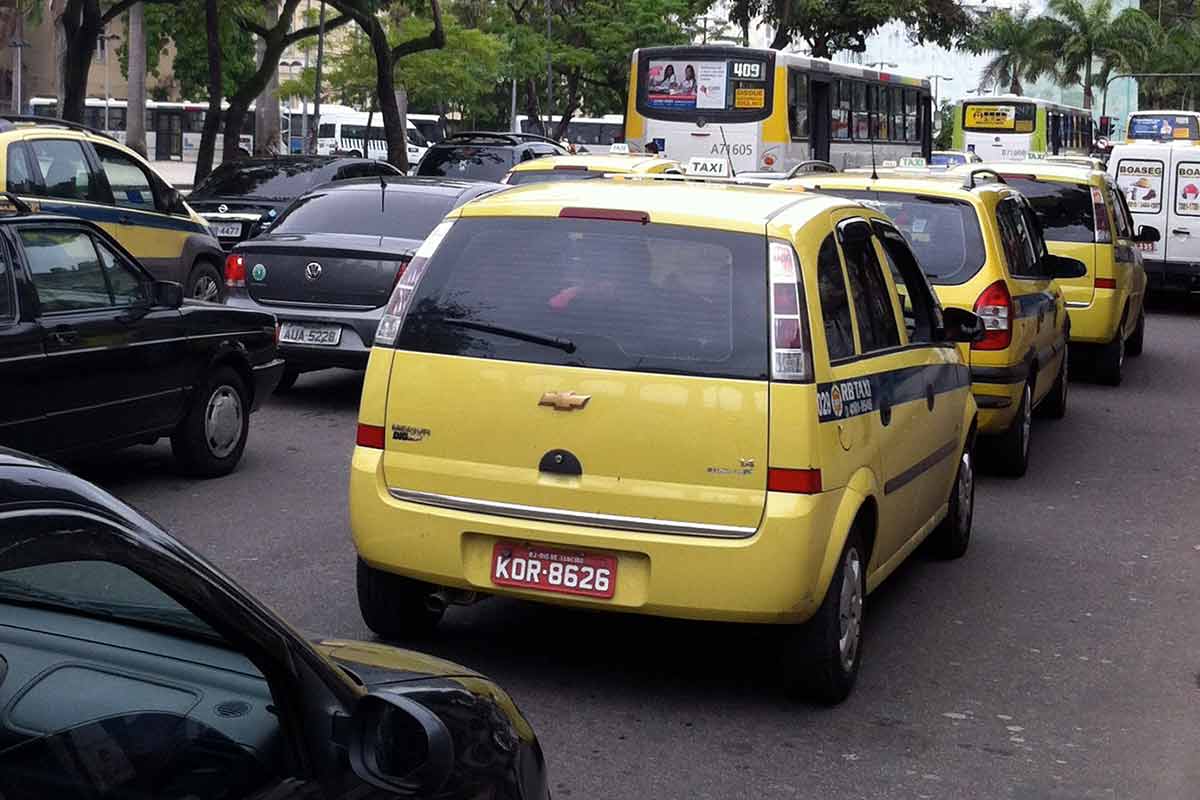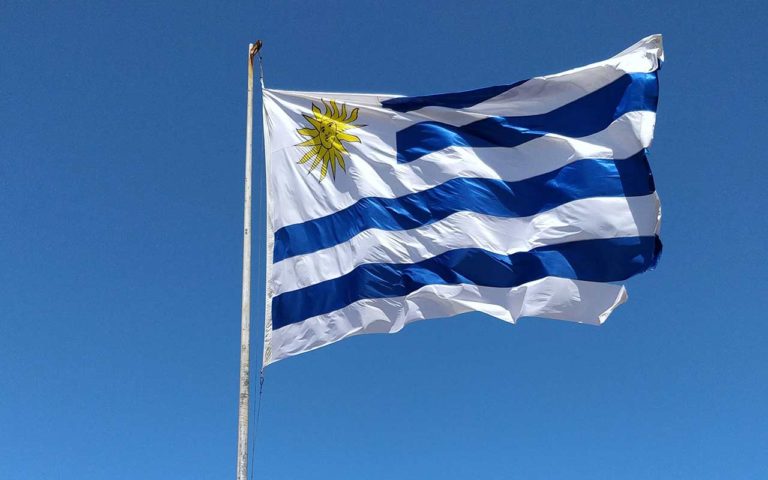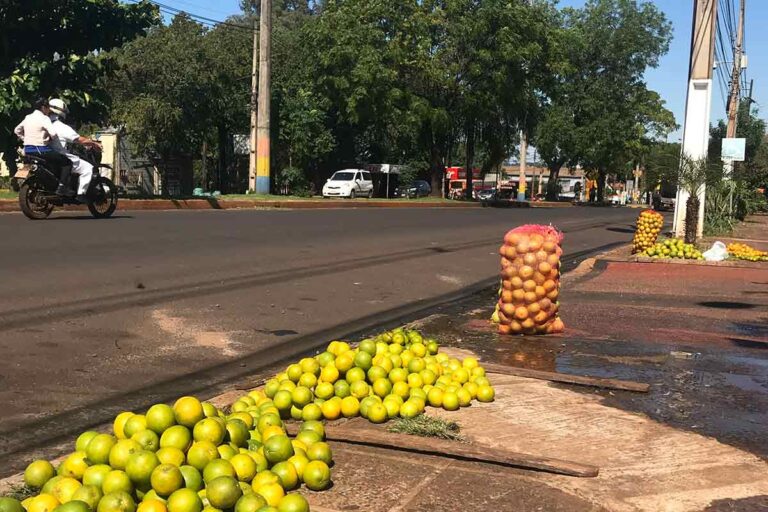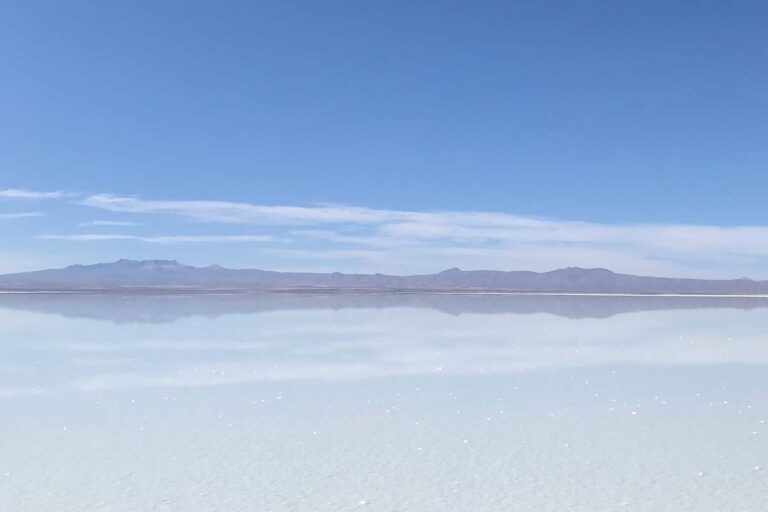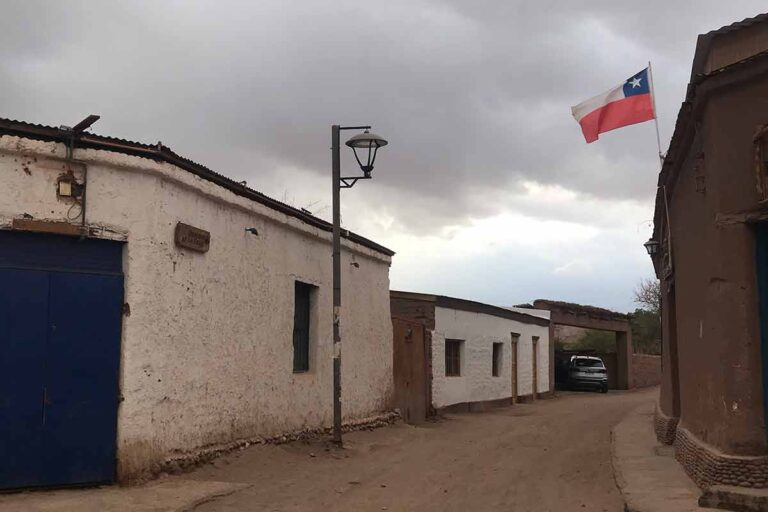Is Copacabana Beach Safe?
Welcome to our Copacabana Beach safety guide.
One of the most famous beaches in all of Latin America, Copacabana remains a hot spot for travelers in Brazil to head to.
Here we can find a festive atmosphere 24/7, with acres of golden sand to enjoy the beach by day, as well as an endless strip of beach bars and restaurants that stay open until the early morning.
Safety on this beach is an infamous topic, and later we’ll do our best to give you the most realistic picture.
Rio de Janeiro Quick Summary:
- 📍 Where is it: Eastern Brazil
- 🗺 Difficulty Getting There: Very Easy
- ⏱ Time needed: 4-8+ Days
- ☀️ Best Time to Visit: Oct/Nov/Feb/Mar
Is Copacabana Beach Safe?
In this comprehensive guide, we’ll explore everything you’ll need to know about Safety on Copacabana Beach as a backpacker or traveler.
We’ll look at all the different factors, our top safety tips, other useful information as well as an FAQ section where we answer your key questions.
Is Copacabana Beach Safe Right Now?
Quick Answer: Overall Copacabana Beach is safe for tourists to visit, however there are a few important things you need to know before heading to this popular Brazilian beach.
The first is that you’ll always want to stick to the more crowded areas (surprisingly enough), given muggings have happened to tourists in the more deserted parts of the beach. Of course this means you’ll want to always keep an eye on your belongings too, and ideally not take anything of great value with you to the beach.
As well as this, usual beach safety tips like using lots of sunscreen and drinking plenty of water are also important. This is because the sun here can get quite intense during the day – which is the same in pretty every other place in Brazil.
Got travel insurance for Rio de Janeiro?
Where to Stay near Copacabana Beach
Given this beach is so wide (over 4 km long), this means there’s a lot of room to find great accommodation choices.
If you’re sticking to a frugal backpacking budget, then we highly recommend staying at the Solar Hostel. Located just two blocks from the beach, they have some really affordable dorm beds and also have really friendly and helpful staff working there too.
Those who are looking for an upgrade in quality will want to stay at the CLH Suites Domingos Ferreira. Here you’ll be staying in a deluxe private room overlooking Copacabana beach, and is also situated close to many great restaurants and bars.
Things to do in and around Copacabana Beach
More than anything, this beach is all about relaxing and living up the good life. Here we’ll find plenty of space for relaxing next to the waves, although it can get packed at times (especially around Christmas and Carnival). There’s also plenty of bars and restaurants for enjoying different cocktails and typical Brazilian plates too.
Along this stretch of coast we’ll also find many interesting gems worth visiting. This includes the Copacabana Fort which is great for learning about Brazil’s earlier history, as well as enjoying a scenic panoramic view of the beach.
Those who love history (or taking quirky photos) can also find many iconic statues along the boardwalk too, including those of Dorival Caymmi and Carlos Drummond de Andrade. This makes it a perfect place to add to your Itinerary around Brazil.
Is Copacabana Beach Safe to Visit?
As we have already clarified what to look out for in terms of tourist crime in Copacabana so lets now cover some other factors worth looking at.
Copacabana Beach Travel Warnings
The most major warning in recent times has actually been the water quality in the sea, as pollution levels had been sharply rising in the last century. However now this has been cleaned up, so you are free to swim and enjoy the waves here.
Crime is still an issue, especially at night on the beach (although you’ll also want to take care when walking a few blocks in from the beach). Which leads us to…
Crime in Rio de Janeiro
Within and around Copacabana beach, always avoid sitting in more remote areas with little people around.
Those in organized crime have been known to target lone tourists with muggings. This actually happened to one of my family members (George), so take it from me personally that you’ll want to avoid this.
In the wider city of Rio de Janeiro, crime is still a problem. This is mostly robbery, although worse crimes like aggravated robbery and rape have been reported by tourists before.
These usually happen in non-touristy areas though, so be sure to do your homework on safe areas at the time of your visit. Like always when traveling in South America, a sturdy money belt like this one is good for concealing some of your personal valuables.
Safety in Rio de Janeiro during the day
The touristy parts of Rio tend to be safe to walk around, which include areas like Copacabana, Ipanema, Lapa and Botafogo. Of course you’ll want to avoid the unsafe barrios and streets, however most hostels and hotels are located far from these.
It is also possible to visit other areas (such as the favelas), however you’ll want to go with this organized tour who knows these areas well and will keep you safe.
Again using common sense is key here. If you feel things are starting to look rough then it’s probably a good idea to turn around. Other things like dressing down and not walking with your phone in your hand are also solid tips to follow too.
Rio de Janeiro Safety at Night
Similar to the day, there will also be areas at night which you’ll want to avoid in Rio. It goes without saying, however, you definitely don’t want to head up into the favelas. I (George) did and will not be repeating it anytime soon…
The areas of Copacabana, Ipanema and Botafogo are usually safe to walk around at night, however you’ll still want to make sure you follow the usual safety tips.
This includes leaving valuables at home, walking confidently without your phone in your hand as well as dressing down (unless if you’re going out – then it’s best to use taxis).
7 Safety Tips for Copacabana Beach
Below we will list 7 of our top safety tips for when you head to Copacabana Beach.
Avoid Walking on the Beach At Night
Whilst the boardwalk itself is safe, walking along the actual sands at night is not a good idea. Firstly the beach is quite wide, so many areas are very dark. This has led to muggings in the past, so it’s best to avoid this risk altogether.
Bring Lots Of Water
Temperatures can get pretty hot here on the beach, and you’ll need to keep yourself well hydrated even if you take regular dips in the sea. This is especially so if you’ll walk all the way along the beach to Ipanema on the other side (something George loved doing most days here). You can carry a Grayl water bottle with you to save money on bottled water.
Watch Your Belongings
Following on from the last point, if you do want to go swimming then it’s best to go with a friend or larger group who can look after your things. Robbery is a common issue along the beaches in Rio, so it’s best to prepare properly. This includes not bringing anything of high value with you either.
Use Taxis After 1:00am
More of a personal pointer here, however things definitely felt more seedy heading into the early hours of the morning. Also given the various beach bars can have quite a bit of distance between them (the entire boardwalk is around 4 km long), it’s best to take a taxi anyway unless you like long walks!
Take out Solid Travel Insurance
Before heading to Brazil we highly recommend you consider taking out quality travel insurance. This will help you out in case you have any issues here, even if little.
World Nomads offers simple and flexible travel insurance. Buy at home or while traveling and claim online from anywhere in the world.
Keep Reapplying Sunscreen
It can be really easy to burn out here in the Brazilian Sun, and even more so given you’ll have plenty of distractions around (including long walks up and down the beach, playing football, the beach bars etc). We recommend reapplying at least every few hours, given the burns can be pretty unforgiving.
Avoid Getting Black-Out Drunk by Yourself
Of course you’re going to party in Rio – it is Latin America’s top party destination after all! However you’ll want to be cautious if you’re out alone, given they serve some pretty strong stuff here and it can be easy to get hammered quickly. Ideally it’s best to go out with a group who can look after you if your plans include going hard.
Copacabana Beach Safety FAQ Guide:
Is Copacabana Beach Safe? Final Words
And that’s all for our guide on how to stay safe on Copacabana Beach.
One of the most famous beaches in Latin America, Copacabana really is a sight to behold. Here you can relax from some of the more strenuous tours that you can do around Rio de Janeiro, and also enjoy the lively 24/7 atmosphere here.
Safety here can vary, although during the day it’s definitely the most safe. At night you’ll want to take extra precautions, such as not walking along the sands (as it’s dark and muggings in these unlit spaces are regular occurrences). However again, with some common sense you can have a safe and enjoyable stay here.
In this guide, we’ve explored the current safety situation on Copacabana Beach, which includes our top safety tips, as well as any current travel advisories.
As well as looking at the best things to do in and around Copacabana Beach, we’ve also included our FAQ which answers your most burning questions.
While you’re still here, why not take a moment to read our comprehensive Brazil Backpacking Itinerary for more tips and travel inspiration to help you on your travels?
👉🏽 P.S. If you’ve found this guide helpful, buy us a coffee here to say thanks! Or, support us by downloading our South America Travel Bible to get our best content.
“Dear traveler! Some links in this post contain affiliate links. Meaning, if you click through and make a purchase, book a hostel or sign up for a tour, we may earn a small commission at no additional cost to you. Your support means a lot and helps us to carry on traveling and maintaining the quality of this site for you.”

